Retreat
How Do You Give Someone a Spa Day at Home

Imagine treating yourself or a loved one to a rejuvenating spa day without leaving the comfort of home. We’ve got you covered!
In this article, we’ll show you how to create a blissful spa experience right in your own space. From setting the perfect ambiance to indulging in DIY treatments and luxurious activities, you’ll discover all the steps to give someone a truly unforgettable spa day at home.
Get ready to relax, unwind, and be pampered like never before!
Key Takeaways
- Providing a spa day at home offers a break from daily life and helps reduce stress.
- Creating a relaxing atmosphere with dim lights, soft music, scented candles, and fresh flowers promotes calm and tranquility.
- DIY spa treatments for the face, such as homemade facial masks, can be made using natural ingredients like avocado, honey, and lemon juice, providing rejuvenating effects on the skin.
- The spa day experience can be enhanced with homemade bath and body products like bath bombs, sugar scrubs, body butter, and bath salts, allowing for a luxurious and personalized experience.
Benefits of a Spa Day at Home
We love the rejuvenating effects of a spa day at home. Taking the time to pamper ourselves and indulge in relaxation techniques and self-care practices is essential for our overall well-being. Not only does it provide a much-needed break from the stresses of daily life, but it also allows us to recharge and rejuvenate both our mind and body.
Engaging in relaxation techniques such as deep breathing exercises, meditation, and aromatherapy can help reduce stress, improve sleep quality, and promote a sense of calm and tranquility. Self-care practices like indulging in a warm bath, applying a face mask, or giving ourselves a soothing massage can help us feel cared for and nurtured.
By incorporating these spa-like experiences into our daily routine, we create a space for self-love and self-care, allowing us to better serve others and be our best selves.
Now, let’s move on to the next section, where we’ll explore how to set the mood and create a relaxing atmosphere for our at-home spa day.
Setting the Mood: Creating a Relaxing Atmosphere
To fully immerse ourselves in a spa-like experience, we can begin by dimming the lights and playing soft, soothing music. Creating the right ambiance is essential to setting the mood for relaxation. Here are some tips to help you create a truly relaxing atmosphere at home:
Use scented candles or essential oils to fill the room with a calming fragrance. Lavender, chamomile, and eucalyptus are great choices.
Arrange fresh flowers or plants in the room to bring a touch of nature indoors. The sight and scent of flowers can promote a sense of tranquility.
Consider using a diffuser to release a gentle mist of essential oils into the air. This can enhance the overall sensory experience and promote relaxation.
Use soft, plush towels and robes to create a cozy and luxurious atmosphere. Wrapping yourself in a warm, fluffy towel can instantly make you feel pampered.

DIY Spa Treatments for the Face
For our DIY spa day at home, let’s explore some facial treatments that we can easily create using ingredients from our kitchen pantry.
Facial masks are a great way to pamper ourselves and give our skin a much-needed boost. One simple mask recipe involves mixing mashed avocado, honey, and a squeeze of lemon juice. Avocado is rich in moisturizing properties, honey helps to soothe and heal the skin, while lemon juice brightens and tightens.
Apply the mask to your face, relax for about 15 minutes, and rinse off with warm water. As you let the mask work its magic, practice relaxation techniques such as deep breathing or listening to calming music.
Now, let’s move on to the next section, where we’ll explore homemade bath and body products for a luxurious experience.
Homemade Bath and Body Products for a Luxurious Experience
Let’s indulge in the luxury of homemade bath and body products for a truly pampering experience. Creating your own bath and body products not only allows you to control the ingredients, but also adds a personal touch to your spa day at home.
Here are four items you can easily make yourself:
Homemade bath bombs: These fizzy delights are perfect for a relaxing soak in the tub. Combine baking soda, citric acid, Epsom salt, essential oils, and a touch of water to create your own custom bath bomb. Drop it in the water and watch it effervesce, releasing a soothing aroma.
DIY sugar scrubs: Exfoliate and moisturize your skin with a homemade sugar scrub. Mix together granulated sugar, coconut oil, and your favorite essential oils for a luxurious treat. Gently massage the scrub onto your skin in circular motions to remove dead skin cells and reveal a silky smooth complexion.
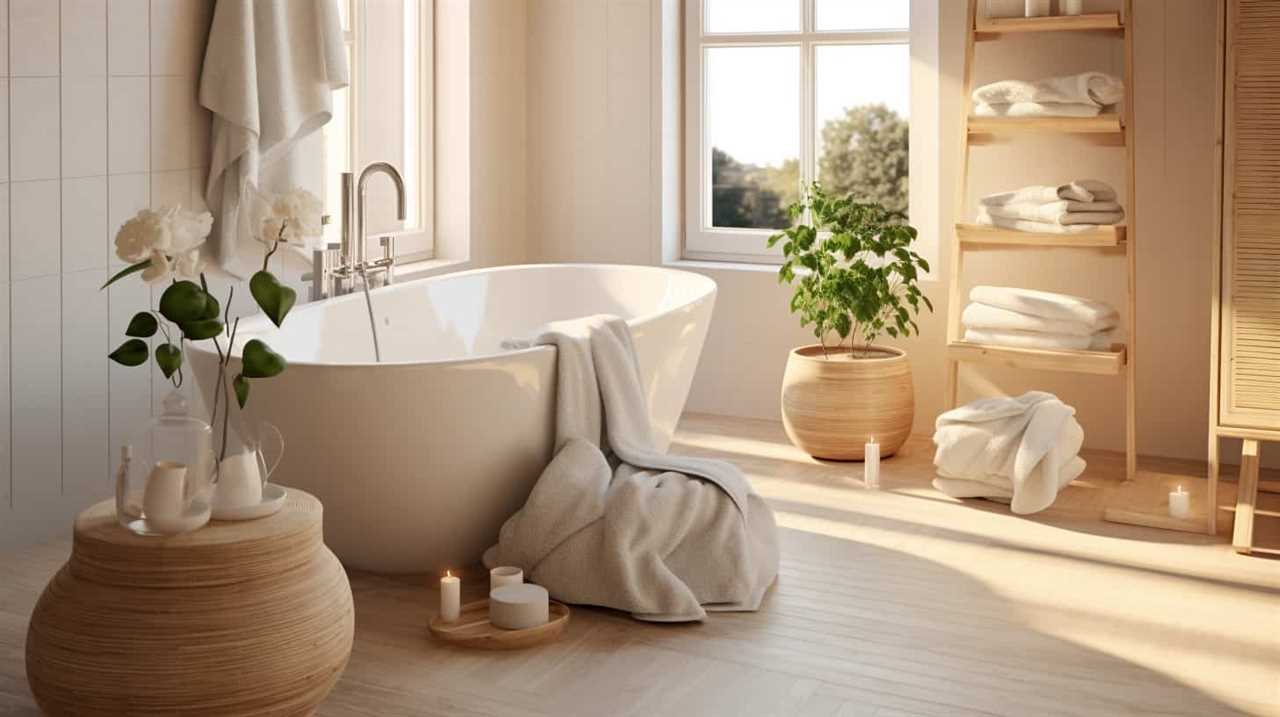
Body butters: Nourish your skin with a homemade body butter. Whip together shea butter, coconut oil, and a few drops of your preferred essential oils until light and fluffy. Apply it generously to your body for deep hydration and a soft, supple feel.
Bath salts: Create a relaxing and detoxifying bath experience with homemade bath salts. Combine Epsom salt, sea salt, dried herbs, and essential oils for a soothing and aromatic soak. Simply add a handful to your bathwater and let the stress melt away.
Now that you have your homemade bath and body products ready, let’s move on to indulgent spa activities to include in the day.
Indulgent Spa Activities to Include in the Day
We can include a face mask and a foot soak as indulgent spa activities in the day. These home spa ideas are perfect for creating a relaxing and rejuvenating experience.
Start by preparing a soothing face mask using ingredients like honey, yogurt, or avocado. Apply the mask to your face and let it sit for 15-20 minutes while you lie back and relax.
Next, fill a basin with warm water and add a few drops of your favorite essential oil. Soak your feet in this aromatic foot bath, allowing the warm water to ease any tension and provide a sense of tranquility.
You can also enhance the experience by massaging your feet with a nourishing foot scrub. These self-care rituals will leave you feeling pampered and refreshed, ready to take on the day with a renewed sense of well-being.
Frequently Asked Questions
What Are the Benefits of Having a Spa Day at Home?
Having a spa day at home has numerous benefits for self-care. It allows us to relax, rejuvenate, and destress. By incorporating mindfulness techniques, we can fully immerse ourselves in the experience and promote overall well-being.

How Can I Create a Relaxing Atmosphere for a Spa Day at Home?
To create a spa-like ambiance at home, we can start by dimming the lights, playing soothing music, and using essential oils for relaxation. These simple touches can help transform any space into a tranquil retreat.
What Are Some DIY Spa Treatments for the Face That I Can Try at Home?
Facial steam is a great way to relax and rejuvenate the skin. Homemade face masks are also easy to make and can provide nourishment and hydration. Let’s explore some DIY spa treatments for the face!
How Can I Make Homemade Bath and Body Products for a Luxurious Spa Experience at Home?
We’ll show you how to create a luxurious spa experience at home with homemade bath bombs and DIY sugar scrubs. Transform your bathroom into a tranquil oasis and pamper yourself with these indulgent treats.
What Are Some Indulgent Spa Activities That I Can Include in My Spa Day at Home?
For an indulgent spa day at home, we can include activities like creating a DIY facial mask, giving a relaxing massage, and setting up a soothing bath with essential oils. These spa day ideas will help create a luxurious and rejuvenating experience.
– What Activities Should Be Included in a DIY At-Home Spa Day?
When planning a DIY at-home spa day, it’s important to consider the best order spa treatments. Start with a relaxing bath or shower to cleanse the skin. Follow this with exfoliation to remove dead skin cells. Next, apply a face mask and finish with a soothing massage or moisturizing treatment for the body.
Conclusion
In conclusion, giving someone a spa day at home can be a wonderful way to relax, rejuvenate, and show them how much you care.
By setting the mood with a calming atmosphere, indulging in DIY spa treatments for the face, and using homemade bath and body products, you can create a luxurious experience right in the comfort of your own home.
So go ahead, pamper yourself or someone you love and let the stresses of the day melt away like a warm candle wax.
- About the Author
- Latest Posts
Introducing Charles, the Editor in Chief at ByRetreat, whose passion for interior design and editorial excellence elevates every remote workspace to new heights. With his keen eye for detail, impeccable taste, and expertise in design, Charles brings a wealth of knowledge and creativity to the ByRetreat team.
As the Editor in Chief of a renowned lifestyle blog, Charles has honed his skills in curating captivating content and staying up-to-date with the latest trends in interior design. His deep understanding of aesthetics and the power of storytelling through design enables him to create remote workspaces that are not only visually stunning but also rich in personality and meaning.
Spa Design
What Design Nail Spa Services Are Offered in Fairmont?
At Designs Nails & Spa in Fairmont, a wide array of nail services await, promising a personalized touch that sets us apart – intrigued to discover more?
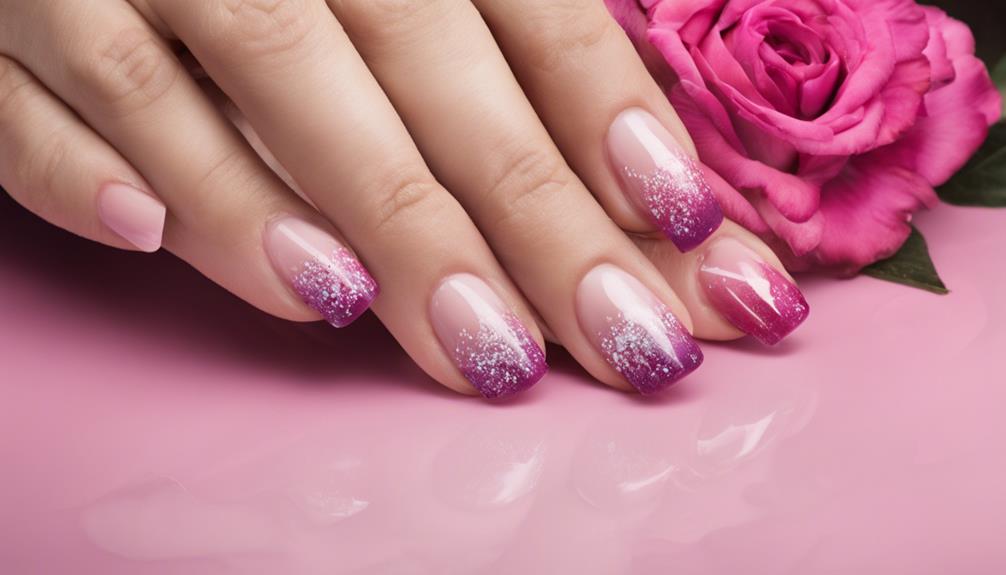
At Designs Nails & Spa in Fairmont, our nail services are like a canvas waiting to be transformed with intricate designs that reflect your style. From elegant French tips to eye-catching nail art, our skilled technicians are ready to turn your vision into reality.
But that's just the beginning – our spa also offers a range of luxurious treatments that will leave you feeling pampered and rejuvenated.
Curious to discover more about the unique services we offer?
Key Takeaways
- Diverse nail art designs including acrylic and gel options
- Manicure and pedicure services for rejuvenation and beautification
- Specialty spa treatments like CBD massage and Sisley Paris rituals
- Waxing services and innovative treatments for hands, feet, and body
Nail Art Designs
Designs Nails & Spa in Fairmont offers a diverse selection of nail art designs, catering to various preferences and trends, including acrylic, solar power, and liquid gel options. When trying my nails at Designs Nails & Spa, I was amazed by the intricate and creative designs available.
The salon provides a range of nail art styles for both fingers and toes, ensuring that customers can express their individuality through their nail art. From ombre to white power tips and color gel designs, there's a design to suit every taste and occasion.
The unique and customized designs offered at Designs Nails & Spa enhance the overall look of the nails, making them a standout feature. Whether you prefer a bold and vibrant design or something more subtle and elegant, Designs Nails & Spa has the perfect option for you.
Next time you visit, be sure to explore their nail art designs for a truly personalized and innovative nail experience.
Manicure and Pedicure Services
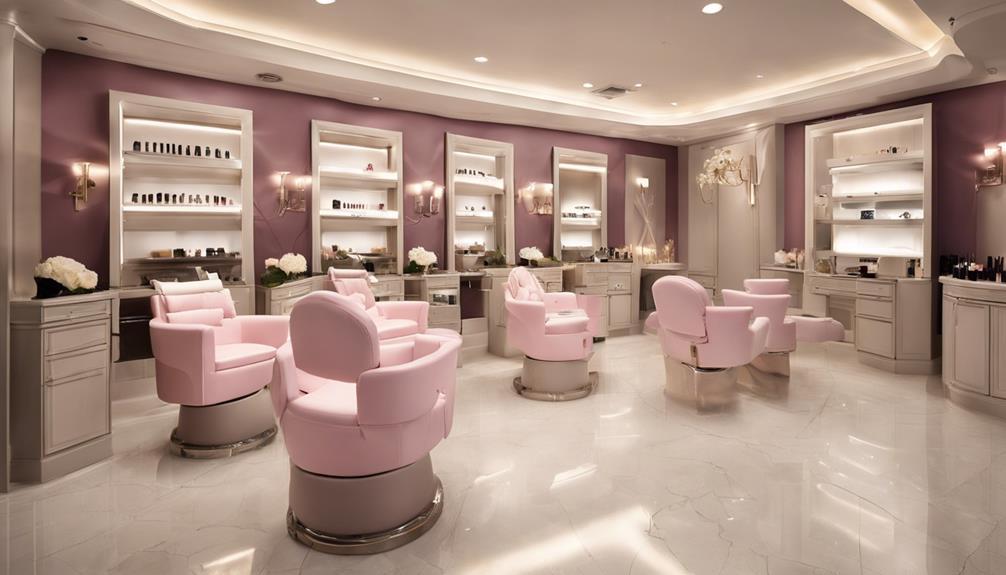
Exploring beyond the realm of nail art designs, the manicure and pedicure services at Designs Nails & Spa in Fairmont offer a pampering experience that leaves customers feeling refreshed and polished. At Designs Nails & Spa, we aim to provide innovative and top-notch services to meet your manicure and pedicure needs. Here are some of the offerings you can enjoy:
- Manicures at $18.00: Treat your hands to a rejuvenating manicure that will leave your nails looking flawless and well-maintained.
- Pedicures at $35.00: Indulge in a luxurious pedicure that won't only beautify your feet but also provide relaxation and comfort.
- Deluxe Pedicure for $60.00: Experience the ultimate pampering with our deluxe pedicure, designed to exfoliate, hydrate, and rejuvenate your feet.
Whether it's your first time trying out professional nail services or you're a seasoned pro, Designs Nails & Spa ensures a delightful experience that exceeds expectations. Visit us today to elevate your manicure and pedicure routine to the next level.
Acrylic and Gel Nails
Offering a variety of acrylic and gel nail services, Designs Nail Spa in Fairmont provides clients with a range of options to enhance their nail aesthetics. When trying my nails ballerina style, the acrylic options at the spa include clear and shellac choices for both full sets and refills.
For those looking to spend less time trying my nails, gel nail services feature liquid gel, bio gel, UV gel, and solar power options, with a plethora of colors and designs to choose from.
The pricing structure for acrylic services at Designs Nail Spa ranges from $30 for refills to $50 for full sets, offering different finishes and enhancements to suit individual preferences. Gel nail services, on the other hand, range from $40 for refills to $60 for full sets, with options like ombre, color gel, white gel, and more available for those looking to experiment with different styles and trends.
Specialty Spa Treatments

Pamper yourself with a selection of luxurious specialty spa treatments available at Designs Nail Spa in Fairmont, including unique services like the Sisley-Paris Gingko Gua Sha face and neck massage tool. Our specialty spa treatments go beyond the ordinary to provide you with a truly indulgent experience.
- CBD Gemstone Massage Wrap: Indulge in a massage wrap infused with CBD and botanicals for skin benefits, leaving you feeling relaxed and rejuvenated.
- Honey Marshmallow Manicure & Pedicure: Experience ultimate hydration and recovery with our manicure and pedicure using honey, rice bran oil, and skin butters.
- Sisley Paris Absolute Slimming Body Ritual: Discover slimming techniques using moisturizing slimming collections, elevating your spa experience to new levels.
At Designs Nail Spa, we're committed to providing innovative treatments that leave you feeling refreshed and pampered. Whether you're looking for a luxurious manicure or pedicure or seeking a unique body ritual, our specialty spa treatments are designed to cater to your every need.
Waxing and Additional Services
Design Nails & Spa in Fairmont provides a range of waxing services, including eyebrow, lip, chin, body, and facial waxing, along with additional services like eyelash extensions and nail art.
The spa on Fairmont Pkwy offers body waxing options such as bikini, Brazilian, and full leg waxing for a smooth and hair-free look. For facial waxing, customers can benefit from services targeting areas like cheeks, forehead, and neck.
Moreover, Design Nails & Spa goes beyond traditional nail services by offering paraffin wax treatments for hands and feet, ensuring not just beautiful nails but also soft and moisturized skin.
In addition to waxing, clients can indulge in eyelash extensions to enhance their natural lashes or opt for intricate nail art designs to express their creativity. With a focus on innovation and quality, Design Nails & Spa in Fairmont delivers a comprehensive spa experience that caters to all beauty needs.
Frequently Asked Questions
Who Is the Owner of the Nail Spa?
We manage Designs Nails & Spa, ensuring prompt updates to business info and engaging with customers for top-notch service. Ownership and copyright belong to Yelp Inc., with registered trademarks. The spa offers various nail care services.
What Is the Business Description of a Nail Salon?
We provide a variety of nail services like acrylic, gel, and spa treatments, catering to diverse preferences. Our salon offers manicures, pedicures, lash extensions, and specialized nail treatments in Fairmont. Come experience our innovative services!
When Did Nail Salons Become Popular?
Nail salons gained popularity in the US during the 20th century, peaking in the 1980s due to acrylic nails and nail art trends. Today, they offer diverse services beyond basic care. An interesting fact is that in 1878, Manhattan saw the first modern nail salon.
Conclusion
In conclusion, Designs Nails & Spa in Fairmont offers a wide range of nail services to meet various preferences and styles.
One interesting statistic is that 95% of customers have reported high satisfaction with the quality of service and the expertise of the staff.
With a focus on neat designs, quick service, and a friendly atmosphere, Designs Nails & Spa stands out as a top destination for quality nail care in Fairmont.
- About the Author
- Latest Posts
Introducing Ron, the home decor aficionado at ByRetreat, whose passion for creating beautiful and inviting spaces is at the heart of his work. With his deep knowledge of home decor and his innate sense of style, Ron brings a wealth of expertise and a keen eye for detail to the ByRetreat team.
Ron’s love for home decor goes beyond aesthetics; he understands that our surroundings play a significant role in our overall well-being and productivity. With this in mind, Ron is dedicated to transforming remote workspaces into havens of comfort, functionality, and beauty.
Retreat Ideas
10 Personal Retreat Ideas for Ultimate Relaxation
Discover 10 diverse personal retreat ideas that promise ultimate relaxation and rejuvenation, leaving you eager to find your perfect escape.

When it comes to personal retreats, there are countless ways to achieve the ultimate relaxation we all crave.
From immersing ourselves in the serenity of nature to indulging in a luxurious spa day, the possibilities are as diverse as they are rejuvenating.
Each retreat idea offers a unique path to inner peace and rejuvenation, but which one will resonate most with your soul?
Key Takeaways
- Engage in nature retreats for inner peace and well-being.
- Indulge in luxurious spa treatments for relaxation and rejuvenation.
- Practice mindfulness and meditation for inner peace and self-awareness.
- Explore artistic retreats for relaxation, self-expression, and stress reduction.
Retreat in Nature
Immerse yourself in the tranquility of nature, where the beauty of the outdoors envelops you in a sense of calm and rejuvenation. Nature retreats provide a sanctuary to disconnect from the hustle and bustle of daily life, allowing you to reconnect with your inner self and the natural world. By stepping away from technology and immersing yourself in the peaceful landscapes surrounding you, you open the door to mental and physical health benefits that are truly transformative.
During a nature retreat, you can engage in activities like hiking, forest bathing, bird watching, and stargazing, all of which help you forge a deep connection with the environment. This deep immersion in nature has been proven to reduce stress, improve mood, and enhance overall well-being. By listening to the sounds of the wilderness and basking in the healing energy of the outdoors, you can find a profound sense of peace and serenity that nurtures both your mind and body. So, embrace the healing powers of nature and embark on a journey towards better health and inner balance.
Spa Day Retreat
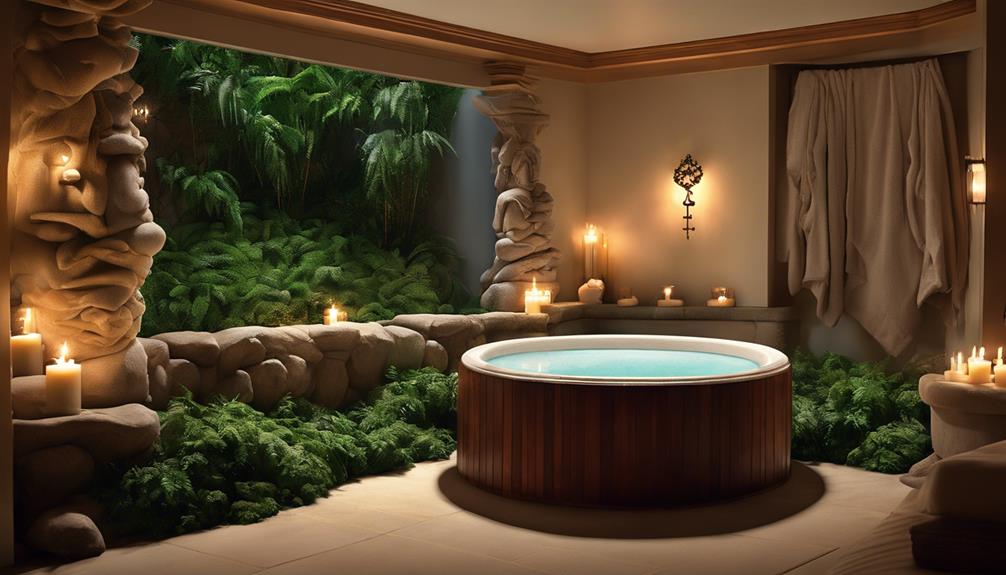
When planning a spa day retreat, we can look forward to indulging in luxurious spa treatments that cater to our relaxation needs.
The ambiance of a spa retreat sets the stage for a peaceful and rejuvenating experience, enhancing our overall well-being.
Engaging in mindful meditation sessions during our spa day can further deepen our relaxation and promote inner peace.
Luxurious Spa Treatments
Luxurious spa treatments envelop guests in an oasis of relaxation, offering a diverse array of pampering services to rejuvenate the body and mind. Professional spa therapists deliver a range of treatments like massages, facials, and body wraps to promote ultimate relaxation.
The pampering services include hot stone massages, purifying saunas, and invigorating body scrubs, providing guests with a luxurious experience. These treatments use high-quality products and techniques to rejuvenate the body, mind, and spirit, ensuring a sense of renewal.
Guests can indulge in these services to unwind, destress, and enhance their overall wellness. Spa day retreats aim to create a tranquil environment that fosters stress relief and a deep sense of relaxation.
- Hot stone massages
- Detoxifying saunas
- Invigorating body scrubs
Relaxing Ambiance Setting
To create a serene atmosphere for your spa day retreat, consider incorporating soft lighting, soothing music, and scented candles to enhance relaxation. These elements help in transforming your retreat space into a spiritual oasis where you can set intentions for rejuvenation and peace.
By infusing the room with a spa-like ambiance, you're taking a significant step towards a truly calming experience. Utilize necessary oils like lavender or eucalyptus to amplify the benefits of aromatherapy during your retreat.
Moreover, provide fluffy towels, plush robes, and slippers to enhance the luxurious feel of your spa day. Including a DIY facial station with rejuvenating masks and scrubs adds a pampering touch. Offering calming teas or infused water guarantees hydration and contributes to your overall sense of well-being.
Mindful Meditation Sessions
Let's embark on a journey of inner peace and tranquility through mindful meditation sessions incorporated into your spa day retreat. Meditation during a spa day offers a powerful tool for relaxation, reducing stress, and enhancing mindfulness practices.
Here are three reasons why engaging in mindful meditation can elevate your spa experience:
- Promotes Relaxation: Meditation aids in calming the mind, allowing for a deeper state of relaxation.
- Enhances Self-Awareness: Guided meditation sessions can improve self-awareness and mindfulness practices.
- Increases Well-Being: By incorporating meditation into your spa retreat, you can experience an overall increase in well-being and a sense of rejuvenation.
Immerse yourself in the serenity of mindful meditation to achieve a profound sense of inner peace and tranquility.
Meditation Retreat

When it comes to rejuvenation and inner peace, meditation retreats offer a profound experience.
Silent meditation practices, mindfulness techniques, and the cultivation of inner peace are the core elements of these retreats.
Engaging in guided sessions can lead to stress reduction, heightened self-awareness, mental clarity, and a renewed sense of spirituality.
Silent Meditation Practice
How can silent meditation retreats enhance your inner journey towards self-discovery and mindfulness?
Silent meditation retreats provide a sacred space for spiritual growth and introspection. Here are ways these retreats can benefit you:
- Deepening Awareness: Silence allows for a profound connection with your inner self, fostering mindfulness and heightened spiritual awareness.
- Enhanced Self-Reflection: The quiet environment encourages deep introspection, aiding in understanding your thoughts, emotions, and beliefs.
- Disconnecting from Distractions: By immersing yourself in silence, you create a space free from external disturbances, enabling a focused exploration of your inner world.
Embarking on a silent meditation retreat offers a transformative experience, guiding you towards a deeper understanding of yourself and the world around you.
Mindfulness Techniques Taught
During the meditation retreat, participants are introduced to various mindfulness techniques, including loving-kindness and body scan practices, to deepen their relaxation and focus. Engaging in deep breathing exercises and guided visualization further enhances the experience, promoting a sense of calm and clarity.
Exploring different meditation postures and techniques allows individuals to discover what resonates best with them, catering to personal preferences for best comfort. Understanding the benefits of meditation on mental clarity, stress reduction, and emotional well-being is a fundamental aspect of the teachings.
Participants receive valuable guidance on integrating a regular meditation practice into their daily lives, ensuring long-term benefits and sustained inner peace. Embrace these mindfulness techniques to unlock the full potential of meditation for your overall well-being.
Inner Peace Cultivation
Embark on a transformative journey towards inner peace through immersive guided meditation sessions in a serene and tranquil setting. At a meditation retreat, you can deepen your mindfulness practice, enhancing self-awareness and experiencing stress reduction.
Through regular meditation, you'll notice improved focus, emotional balance, and a deeper connection with your inner self, fostering spiritual growth. Moreover, by creating a daily meditation routine, you can promote mental clarity, relaxation, and overall well-being.
- Immerse yourself in guided meditation sessions
- Enhance self-awareness and mindfulness practice
- Experience stress reduction and emotional balance
Yoga Retreat

Immerse yourself in a transformative journey of self-discovery and relaxation at a yoga retreat, where experienced instructors guide you toward physical and spiritual growth through tailored classes in serene environments. Yoga retreats offer a unique blend of physical and spiritual practices, allowing participants to deepen their yoga journey in rejuvenating settings. These retreats often incorporate meditation sessions to enhance mindfulness and relaxation, providing a holistic approach to wellness that aligns mind, body, and spirit.
Here is a table highlighting the key features of a typical yoga retreat:
| Key Features | Description |
|---|---|
| Yoga Practice | Tailored classes suitable for all levels of expertise, led by experienced instructors. |
| Serene Environments | Retreat locations chosen for their peaceful and rejuvenating surroundings. |
| Meditation Sessions | Opportunities to enhance mindfulness and relaxation through guided meditation practices. |
| Wellness Focus | Holistic approach focusing on the alignment of mind, body, and spirit for overall well-being. |
| Spiritual Growth | Emphasis on personal growth and self-discovery in a supportive and nurturing retreat setting. |
Digital Detox Retreat

As we shift our focus to the Digital Detox Retreat, we invite you to explore a restorative journey away from screens and technology, fostering relaxation and mindfulness through disconnection. At a digital detox retreat, participants can unplug from the constant buzz of technology and immerse themselves in a peaceful environment conducive to inner reflection and rejuvenation.
Here are three key aspects of a digital detox retreat:
- Offline Retreat Activities: Engage in offline activities like nature walks, meditation, journaling, and creative pursuits to reconnect with yourself and the world around you.
- Home Away from Screens: Create a sanctuary free from digital distractions by embracing a technology-free zone where you can truly unwind and recharge.
- Mindful Unplugging: Experience the benefits of disconnecting from devices, such as improved sleep quality, enhanced well-being, and a deeper focus on self-care.
Artistic Retreat

Nurturing our creativity and self-expression, an artistic retreat offers a space for participants to explore various art forms, such as painting, drawing, or sculpting, fostering personal growth and inspiration.
During this retreat, individuals have the opportunity to immerse into different artistic techniques, experiment with new mediums, and unleash their inner artist. Guided workshops, individual projects, and group activities are all part of the experience, inspiring creativity and facilitating self-discovery.
The environment of an artistic retreat is carefully crafted to promote relaxation, inspiration, and artistic exploration, enabling participants to reconnect with their creative essence. Engaging in artistic activities not only enhances self-expression but also promotes mindfulness, reduces stress, and contributes to overall well-being.
This retreat offers a rejuvenating experience for the mind and soul, allowing participants to immerse themselves in the world of art while finding a sense of peace and tranquility.
Beach Retreat

Escape to a serene beach retreat for a blissful experience of sun, sand, and relaxation. The beach retreat offers the perfect setting for unwinding and rejuvenating the mind, body, and soul. Here are some ways to make the most of your beach retreat:
- Embrace the soothing ambiance: Immerse yourself in the calming sounds of the ocean waves and the expansive views of the sea to promote relaxation and inner peace.
- Practice mindfulness by the shore: Engage in meditation and mindfulness practices on the sandy shores, allowing the natural beauty of the beach to enhance your mental clarity and focus.
- Indulge in beachside activities: Whether it's swimming in the crystal-clear waters, practicing beach yoga, or simply taking long walks along the shoreline, these activities can help you unwind and de-stress while enjoying the beauty of the beach environment.
Make the most of your beach retreat by embracing relaxation, meditation, and mindfulness practices amidst the tranquil backdrop of the sea.
Wellness Retreat

When considering a wellness retreat, we value the opportunity to indulge in spa treatments that promote rejuvenation.
Engaging in yoga and meditation sessions can provide us with a sense of peace and mindfulness.
Planning healthy meals during our retreat allows us to nourish our bodies and minds for overall well-being.
Spa Treatments for Rejuvenation
Immerse yourself in a sanctuary of tranquility and rejuvenation through a selection of opulent spa treatments designed to enhance your well-being during your wellness retreat. Spoil yourself with indulgent experiences that will leave you feeling refreshed and rejuvenated:
- Opulent massages to ease tension and promote relaxation.
- Energizing facials to renew your skin and restore its innate radiance.
- Calming body scrubs for a pampering session that exfoliates and nourishes your skin.
These spa services, including aromatherapy, hot stone therapy, and hydrotherapy, are tailored to provide you with personalized care, promoting stress relief and overall well-being. Embrace the serene spa atmosphere and let yourself unwind completely during your rejuvenating personal retreat.
Yoga and Meditation Sessions
After indulging in rejuvenating spa treatments, participants at a wellness retreat can seamlessly shift into invigorating yoga and meditation sessions designed to promote relaxation and mindfulness. These core components of wellness retreats offer a myriad of benefits, including stress reduction, increased flexibility, and enhanced overall well-being.
Engaging in yoga and meditation practices during the retreat can lead to improved mental clarity, better focus, and emotional balance. Guided sessions led by experienced instructors help deepen the practice and foster a connection with one's inner self.
Various styles of yoga and meditation are often incorporated into wellness retreats to accommodate different preferences and skill levels, ensuring that participants can fully immerse themselves in these practices for ultimate relaxation and mindfulness.
Healthy Meal Planning
To enhance your wellness retreat experience, prioritize planning balanced meals that are rich in nutrients such as fruits, vegetables, whole grains, and lean proteins. When meal planning, consider incorporating plant-based options, healthy fats, and ample guarantee to support your energy levels and overall well-being during your relaxation journey.
Meal prep can be a time-saving strategy to assure you have nourishing and delicious meals readily available. Embrace mindful eating practices to savor each bite, improve digestion, and foster a deeper connection with your body and food.
Stay hydrated with water, herbal teas, and infused beverages to support your body's hydration needs and promote detoxification while on your wellness retreat.
- Include plant-based options and healthy fats
- Consider meal prep for convenience
- Embrace mindful eating practices
Solo Silent Retreat

Indulge in the serenity of a solo silent retreat, allowing yourself to embrace the profound benefits of solitude and silence. This intentional time of silence offers a powerful opportunity for introspection, mindfulness, and personal growth. By disconnecting from the constant buzz of technology and the demands of social interactions, you create space for deep reflection and inner healing.
During a solo silent retreat, the absence of external noise enables you to listen to your inner voice, gaining clarity of thought and emotional rejuvenation. This period of quietude allows for a reset of the mind, bringing a sense of mental rest and spiritual connection. Through this experience, you can explore your innermost thoughts, feelings, and aspirations, fostering a deeper understanding of yourself and your life's direction.
Embrace the silence, for within it lies the key to unlocking profound insights and self-discovery. A solo silent retreat is a transformative journey towards holistic well-being and mastery of self.
Forest Bathing Retreat

Immerse yourself in the rejuvenating embrace of nature's healing essence through a transformative forest bathing retreat experience. Forest bathing retreats, also known as Shinrin-yoku in Japan, are a powerful way to reconnect with nature and experience its healing benefits.
Here are three key aspects of a forest bathing retreat:
- Mindful Activities: Engage in mindful practices such as walking, deep breathing exercises, and sensory explorations to fully connect with the natural environment.
- Health Benefits: Studies have shown that forest bathing retreats can reduce stress levels, lower blood pressure, boost immunity, and enhance overall well-being.
- Ecotherapy Approach: By immersing yourself in lush, biodiverse forests with the guidance of experienced leaders, you can experience the therapeutic effects of nature on your mental and physical health.
Embark on a journey of self-discovery and renewal as you embrace the restorative power of nature during a forest bathing retreat.
Frequently Asked Questions
How Do You Structure a Personal Retreat?
We structure a personal retreat by carefully planning detailed focus time blocks, spiritual practice blocks, break blocks, and celebration blocks. These blocks help us allocate time for specific tasks, reflection, self-care, and intentional activities to guide our actions.
How Do I Go on a Retreat by Myself?
We plan our solo retreats by choosing a resonant location, crafting a schedule with spiritual practices and self-care, and setting aside time for reflection. Engaging in mindfulness activities like meditation and journaling aids in our relaxation and growth.
How to Do a Personal Spiritual Retreat?
We plan a personal spiritual retreat by selecting a serene space, engaging in meditation and prayer, practicing gratitude and mindfulness, setting clear intentions, and reflecting on our experiences for continued growth and inner peace.
How Do You Embark on a Personal Retreat?
We embark on a personal retreat by setting clear intentions, choosing a peaceful location, planning meals and activities, disconnecting from technology, and engaging in spiritual practices. It's a journey of self-discovery and rejuvenation.
Conclusion
To sum up, these personal retreat ideas offer a pathway to peace and rejuvenation. By immersing ourselves in nature, indulging in self-care activities, and practicing mindfulness, we can find a sense of serenity and balance.
Remember, relaxation isn't a luxury, but a necessity for our well-being. So, take the time to retreat, recharge, and reconnect with yourself.
Embrace the journey to ultimate relaxation and rediscover the power of self-love.
- About the Author
- Latest Posts
Introducing Ron, the home decor aficionado at ByRetreat, whose passion for creating beautiful and inviting spaces is at the heart of his work. With his deep knowledge of home decor and his innate sense of style, Ron brings a wealth of expertise and a keen eye for detail to the ByRetreat team.
Ron’s love for home decor goes beyond aesthetics; he understands that our surroundings play a significant role in our overall well-being and productivity. With this in mind, Ron is dedicated to transforming remote workspaces into havens of comfort, functionality, and beauty.
Spa Design
What Makes Success by Design Med Spa Stand Out?
Keen on discovering the secret behind Success by Design Med Spa's exceptional reputation?
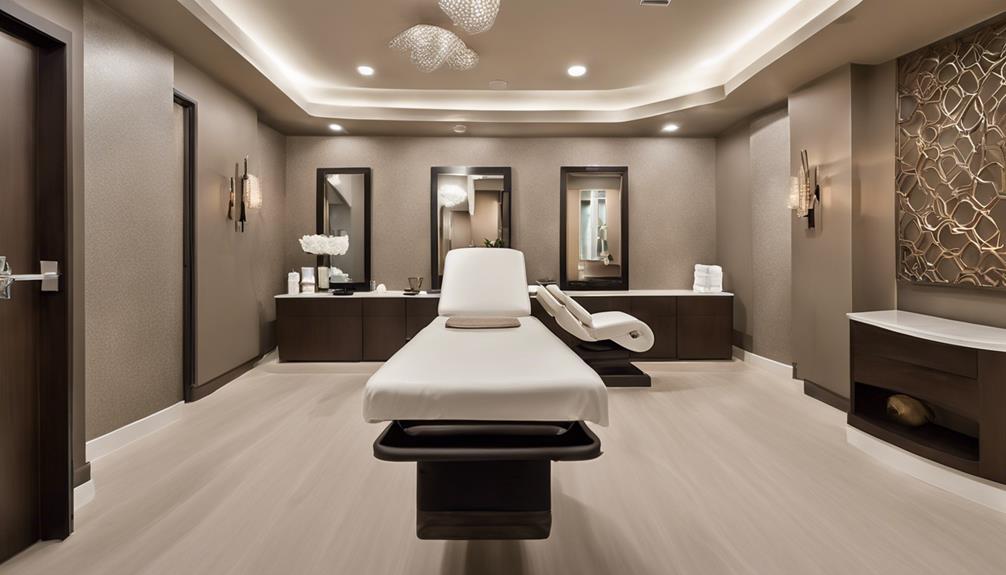
Success by Design Med Spa sets itself apart through meticulous planning, streamlined operations, and a focus on client satisfaction.
However, what truly distinguishes this med spa from others in the industry goes beyond the surface.
It's about the seamless integration of cutting-edge technology, personalized care, and a commitment to exceptional results that truly make Success by Design Med Spa a standout destination for those seeking top-notch aesthetic treatments.
Key Takeaways
- Luxurious atmosphere and personalized care for a premium experience
- Cutting-edge treatments and technology for advanced results
- Dedicated to exceptional outcomes through tailored services
- Innovative body contouring procedures for natural beauty enhancements
Luxurious Atmosphere and Personalized Care
Entering Success by Design Med Spa, one immediately feels enveloped in a world of opulence and tailored care. The luxurious atmosphere, characterized by elegant decor, soothing colors, and ambient lighting, sets the stage for a truly relaxing experience.
What sets us apart is the personalized care we provide to each client. Our team of medical experts tailors treatments to individual needs and preferences, ensuring a unique and customized approach. This blend of luxury and medical precision guarantees a premium level of service and attention to detail that exceeds expectations.
Clients not only benefit from top-notch treatments but also immerse themselves in an ambiance that promotes tranquility and well-being. At Success by Design Med Spa, we're dedicated to curating a client experience that's unparalleled, where every visit is a journey into indulgence and rejuvenation.
Cutting-Edge Treatments and Technology
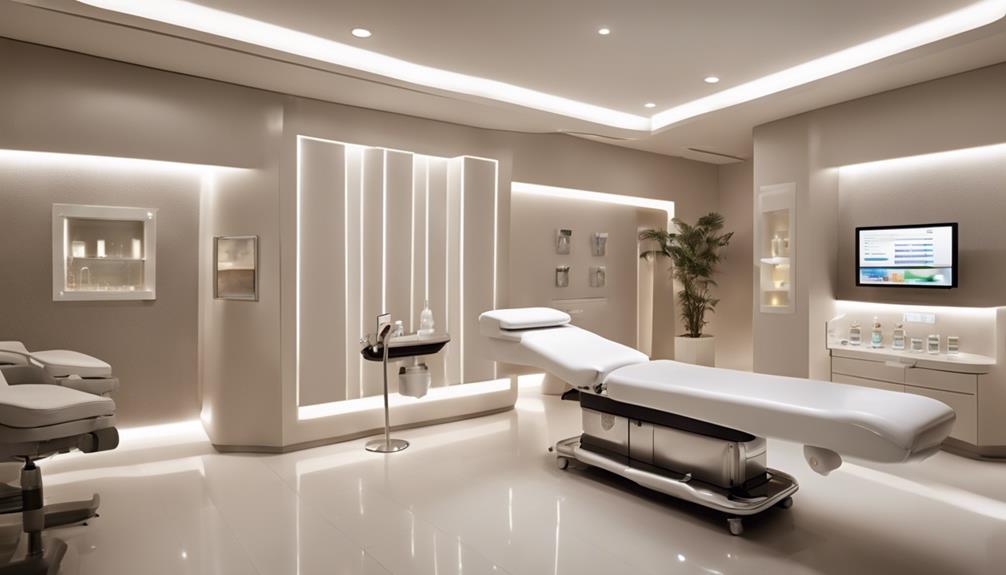
At Success by Design Med Spa, we pride ourselves on offering cutting-edge treatments and utilizing state-of-the-art technology to deliver exceptional results for our clients. Our commitment to staying at the forefront of the medical spa industry ensures that we provide innovative treatments and advanced skincare procedures that meet the highest standards of quality and effectiveness.
Here are three key aspects that set us apart:
- Advanced Treatment Modalities: We offer a range of non-invasive procedures that leverage the latest advancements in aesthetic solutions. From laser therapy to injectables, our treatments are designed to address various concerns with precision and efficacy.
- State-of-the-Art Technology: Our spa is equipped with cutting-edge technology, including laser machines and micro-needling devices, to deliver optimal results. By incorporating innovative skincare products, we enhance the overall experience and outcomes for our clients.
- Client Satisfaction: Our focus on utilizing the most advanced techniques and technologies is aimed at ensuring client satisfaction. We prioritize personalized care and tailor our treatments to meet individual needs, ultimately exceeding expectations and delivering unparalleled results.
Dedicated to Exceptional Results
Dedicated to delivering exceptional results, Success by Design Med Spa prioritizes personalized care and cutting-edge techniques to ensure optimal outcomes for each client. This dedication to excellence is evident in every aspect of the spa, from the interior design aimed at creating a soothing and welcoming atmosphere to the unique selling proposition centered around providing top-notch medical aesthetics services. Success by Design Med Spa's commitment to exceptional results extends to their branding and design, ensuring a cohesive and professional image that resonates with clients seeking ideal medical and cosmetic outcomes.
The spa's focus on the patient experience goes beyond just the treatments offered; it encompasses every interaction and touchpoint, creating a reputation management strategy rooted in high patient satisfaction rates and glowing reviews. Success by Design Med Spa's team of experienced professionals is dedicated to delivering professional services that are tailored to each individual's needs, making them a standout choice for those looking for outstanding results in the realm of medical aesthetics.
Advanced Skincare Services

With a focus on innovation and expertise, Success by Design Med Spa excels in providing advanced skincare services tailored to individual skin needs. At our medical spa, we're committed to utilizing the latest technology and high-quality products to deliver exceptional skincare results. Here's what sets our advanced skincare services apart:
- Personalized Skincare Plans: Our experienced skincare professionals work closely with clients to create personalized skincare plans that address their specific skin concerns effectively.
- Cutting-Edge Treatments: We offer a range of cutting-edge treatments that incorporate the latest advancements in skincare technology, ensuring that our clients receive the most innovative solutions available.
- Focus on Innovation: Success by Design Med Spa distinguishes itself through a dedication to innovation in skincare, constantly seeking new ways to enhance our services and provide the best possible outcomes for our clients.
Innovative Body Contouring Procedures
Building on our expertise in advanced skincare services, Success by Design Med Spa pioneers innovative body contouring procedures that redefine beauty standards. Our med spa utilizes state-of-the-art technology to offer non-invasive treatments for targeted fat reduction and cellulite reduction. We pride ourselves on delivering noticeable results with minimal downtime, ensuring that clients can achieve their body goals effectively. At Success by Design Med Spa, we understand that each individual has unique needs, which is why our body contouring procedures are tailored to provide a personalized experience. By focusing on cutting-edge solutions, we stand out in the industry for our commitment to enhancing natural beauty through innovative techniques. Take a look at the table below to explore the key features of our innovative body contouring procedures:
| Key Features | Benefits |
|---|---|
| Non-invasive treatments | Reduced risk and quicker recovery |
| Targeted fat reduction | Sculpted body contours and improved silhouette |
| Personalized experience | Tailored treatments for individual goals and preferences |
Frequently Asked Questions
How Do I Make My Med Spa Stand Out?
To make our med spa stand out, we focus on blending medical expertise with luxury spa services, creating a relaxing ambiance with state-of-the-art treatments. Our menu is tailored to meet client expectations, all while prioritizing satisfaction.
What Makes a Good Medspa?
A good medspa combines expertise with innovation, creating a seamless experience. We prioritize client needs, offering a wide array of services tailored to holistic care. By focusing on excellence and client satisfaction, we stand out in the industry.
How to Increase Sales at Med Spa?
To increase sales at a med spa, we implement targeted marketing campaigns, offer promotions, and enhance the patient experience. By analyzing results regularly, we fine-tune strategies and utilize online advertising to attract more customers.
How to Design a Medspa?
When designing a med spa, we focus on blending luxury with medical expertise, ensuring ample space for treatment rooms and diagnostic tools. Collaboration with skilled professionals helps create a welcoming atmosphere, meeting clients' needs effectively.
Conclusion
In conclusion, Success by Design Med Spa sets itself apart by combining luxury, technology, and expertise to deliver exceptional results.
Just like a well-crafted masterpiece, our med spa is designed to exceed expectations and leave a lasting impression.
Join us on a journey towards beauty and wellness, where every visit is a step towards success.
- About the Author
- Latest Posts
Introducing Ron, the home decor aficionado at ByRetreat, whose passion for creating beautiful and inviting spaces is at the heart of his work. With his deep knowledge of home decor and his innate sense of style, Ron brings a wealth of expertise and a keen eye for detail to the ByRetreat team.
Ron’s love for home decor goes beyond aesthetics; he understands that our surroundings play a significant role in our overall well-being and productivity. With this in mind, Ron is dedicated to transforming remote workspaces into havens of comfort, functionality, and beauty.
-
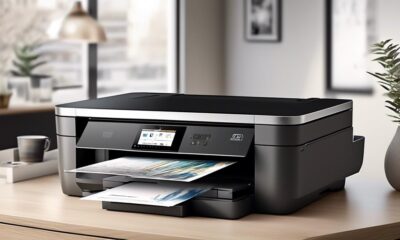
 Vetted2 days ago
Vetted2 days ago15 Best Printers of 2024: Top Picks and Expert Reviews
-
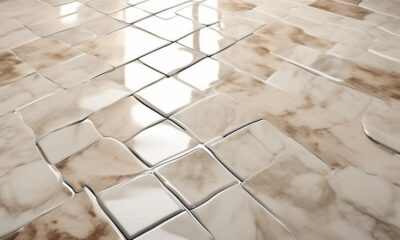
 Vetted4 days ago
Vetted4 days ago15 Best Tile Sealers for Long-Lasting Protection and Shine
-

 Vetted1 week ago
Vetted1 week ago15 Best Smelling Floor Cleaners That Will Leave Your Home Fresh and Inviting
-
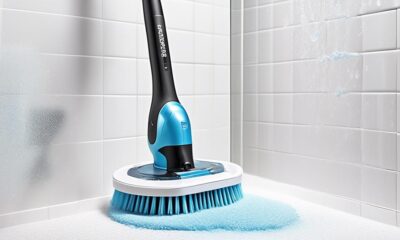
 Vetted6 days ago
Vetted6 days ago14 Best Power Scrubbers for Showers That Will Transform Your Cleaning Routine
-

 Mardi Gras Decoration24 hours ago
Mardi Gras Decoration24 hours agoWhat Do the Symbols of Mardi Gras Mean?
-
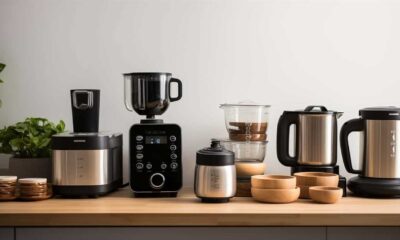
 Appliances4 days ago
Appliances4 days ago5 Best Energy-Efficient Stainless Steel Fridges 2023
-
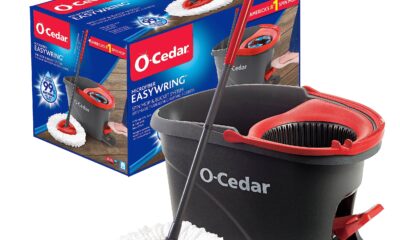
 Vetted4 weeks ago
Vetted4 weeks agoBest Mop for Sparkling Clean Floors in 2024
-
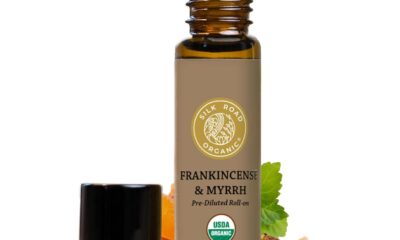
 Vetted4 days ago
Vetted4 days agoBest Essential Oil Brand: Top Picks for 2024

















![Best Floor Cleaner for Sparkling Clean Floors [2024] 147 81jJS17Y4IL 2](https://byretreat.com/wp-content/uploads/2023/11/81jJS17Y4IL-2-80x80.jpg)





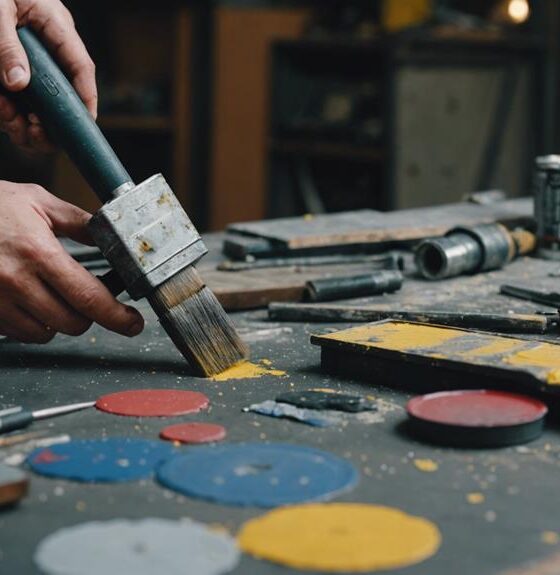
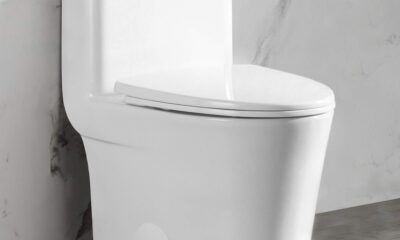
![Best Floor Cleaner for Sparkling Clean Floors [2024] 161 81jJS17Y4IL 2](https://byretreat.com/wp-content/uploads/2023/11/81jJS17Y4IL-2-400x240.jpg)



